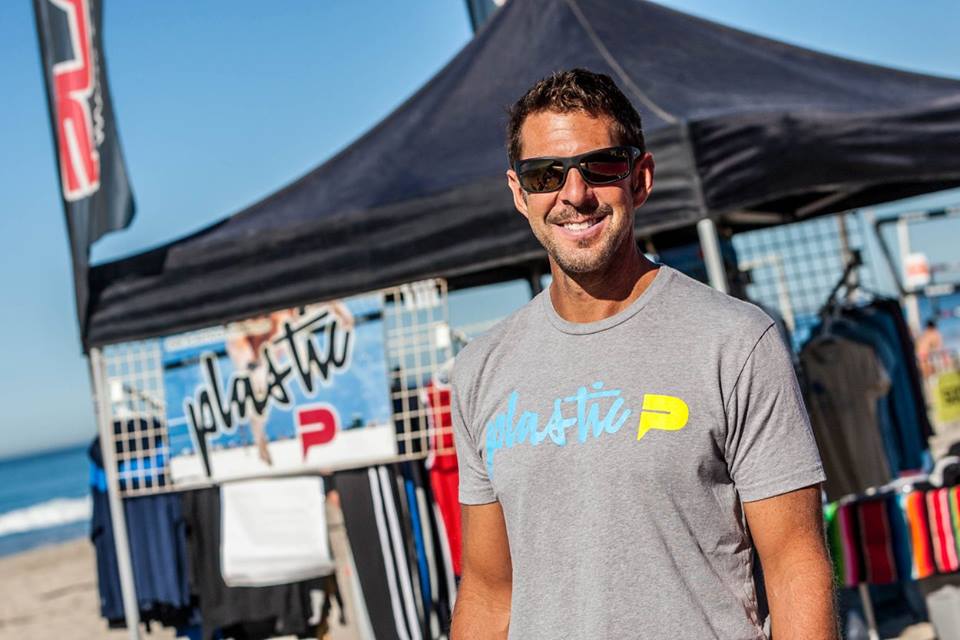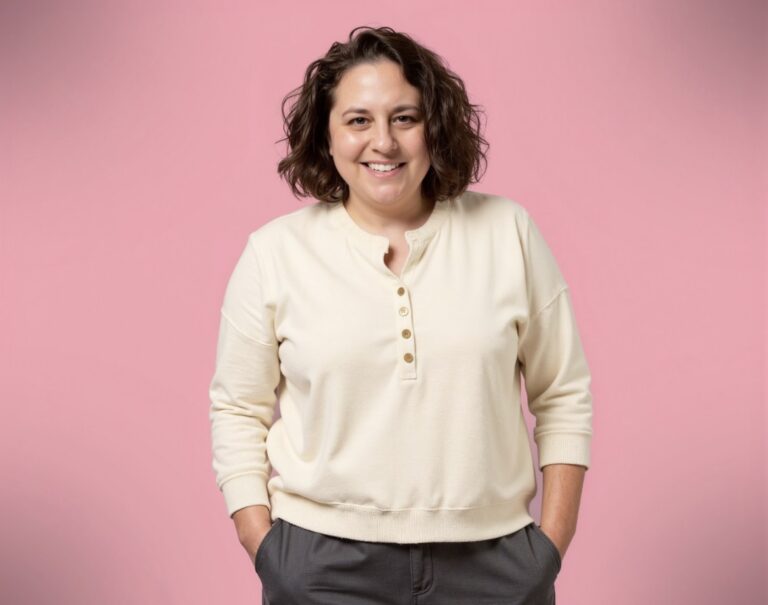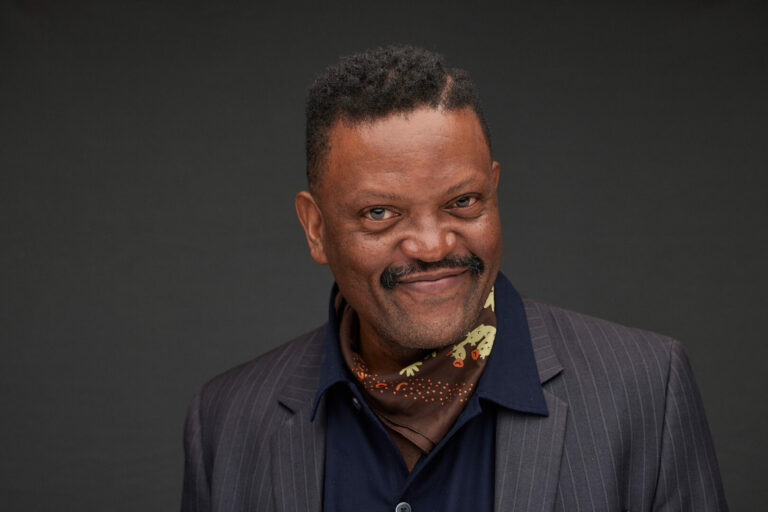We’re excited to introduce you to the always interesting and insightful Ellen Mirro. We hope you’ll enjoy our conversation with Ellen below.
Hi Ellen, we’re so appreciative of you taking the time to share your nuggets of wisdom with our community. One of the topics we think is most important for folks looking to level up their lives is building up their self-confidence and self-esteem. Can you share how you developed your confidence?
My approach to confidence has always been “fake it until you make it,” or know what
you don’t know and learn from the experts. As an architect, the broader your experience
the more expertise you can exhibit the higher the level of confidence you gain.
Partnering with other architects on big projects has been a real boon. Architecture is
one of those professions where knowing a little about a lot of things really helps with the
design. The key is to know what you don’t know and bring in the appropriate experts.
I have worked on teams designing everything from public schools to high rises, and
design custom residential and commercial projects within my own office. Each project
has expanded my knowledge and confidence. When I began presenting Landmark
Nominations, I knew the material but needed to project confidence in order to
keep the Landmarks Board engaged so they could understand the facts. The
more I presented, the more comfortable I got with giving those presentations and
today I jump at the chance to do so, I find it so enjoyable to share what is
important to me with others who share interest in the topic. These days I present
regularly at conferences and at the Evergreen State College Tacoma Campus.
I have managed to build my own expertise in Historic Architecture and Architectural
History, so I get called in by other architects to assist them with their projects. I was so
proud and honored when Cone Architects listed my firm as the Historic Architect for
their mixed-use Dockside project when they won a 2023 AIA award of Merit.
(https://cone-arch.com/work/dockside/) I have worked with Gensler on the Palihotel in
Seattle, with MZA on the Fifth and Virginia high rise project, and with Ankrom Moisan
and Kengo Kuma on the 2nd and Virginia residential high rise project. This expertise
allows me to meet others in my own profession, understand the importance of
collaboration, and understand the diversity of practice in the profession.

Let’s take a small detour – maybe you can share a bit about yourself before we dive back into some of the other questions we had for you?
I’m really lucky in that I’m a married mom of two grown sons who has been able to pursue my career due to the support of a spouse who shares equally in family life. This true partnership means that I get to pursue a sustainable lifestyle due to my husband’s farming, and pursue my passion for architecture rehabilitating our farm buildings.
I am obsessed with architecture and architectural history, and feel so lucky that I get to
live in the architecture world every day. Architecture is central to our understanding of
our cultural identity, and to me preserving architecture feels like preserving our collective
identity. When I can help a team rehabilitate a landmark structure, or help a homeowner
bring back the character of their own home and make it more functional for them, it is so
satisfying. Whether the scale is city wide or for a single family, I can see the impact of
designing while saving those pieces of the past that mean the most to us.
When we design for clients, we always put their priorities first, and this year my partners
and I are investing our talent and experience into designing for ourselves. We’re creating
our new office space and tenant improvements. Having a personal space tailored to our
own firm and tastes has really benefited the company. I want to be in the office everyday rather than working from home. Being in the office leads to increased collaboration with my partners. We have embraced our new neighborhood, Hillman City, and have made connections to our local Historical Society and Neighborhood Association so that we can both contribute to the historical knowledge and help forge the future of the neighborhood.
Although designing for ourselves has been a real joy, I get a different satisfaction from
providing clients with an improved home, and at the same time increase their quality of
life. It is so important when designing for others to listen very carefully to their priorities
and preferences. As architects we use our knowledge to bring our clients the safest,
healthiest, most delightful environment we possibly can. The “delight” part of the
equation is all based on our intimate understanding of our clients’ unique wants and
needs.
Just as having broad experience with other firms is so important to my understanding of
the profession, having two business partners who have different experience and
strengths is also a huge benefit to my work. If I need help with codes or a different
approach to a design I know my partners will have my back.
Principal Howard Miller has been my mentor since I started my architecture career and
is a great all-around generalist. He has sixteen more years of experience than me in the
profession, so well prepared to help me develop the myriad of skills required. Howard’s
other strength is interpersonal. He develops long term relationships with clients and gets
referrals for new jobs.
Principal Steve Campbell’s precision keeps me vigilant and his facility with technology
keeps me up to speed. Steve has experience in healthcare design which gives him an
invaluable knowledge of commercial architecture accessibility requirements and codes.
His technology expertise keeps us up to date with our Building Information Modeling
software.
I bring to the team historic architecture expertise and together, we feel we have a well-
rounded practice. There is great comfort in working with the same people for twenty
years and the trust that garners. Whenever I start to question my design or approach I
trust that my partners will either tell me I’ve got it and I should go for it, or they will give
me really constructive advice to improve. I can’t really imagine practicing architecture
alone. One of my favorite sayings is “Architecture is a team sport.”
When we design homes, we design for all ages, and all configurations of households:
single people, nuclear families, extended families, and for situations where there may
be rentals. Steve’s background in healthcare design has informed a lot of our design
when we are looking at accessibility issues or multigenerational design.
Steve designed an accessible multigenerational home where the daughter, who uses a
wheelchair, occupies the ground floor unit while the dad occupied the two upper levels.
Steve’s accessible design knowledge also helped inform my design of a guest suite
addition meant for the aging parents of my clients who also have two young children.

If you had to pick three qualities that are most important to develop, which three would you say matter most?
The first quality necessary for success is curiosity. Look about you, if you have a
question follow up. This is especially useful if you have an expert in front of you. I work
with archivists a lot in order to get information on the history of certain buildings.
Archivists have such a wealth of knowledge and usually love to share it with you.
Sometimes I ask for a certain document, but what the archivist gives me doesn’t contain
what I am looking for. That is usually because I asked the wrong question or wasn’t
precise. I find that if I ask them about what I am looking for in a different way and take
their advice, I will find the information.
The second quality is flexibility. Never dig in too deep and remain open to new ideas.
Building technology and building science is changing all the time. As an architect you
can’t ever be complacent that the one building system you specified last time will be the
best solution to your new project. You have to stay open to investigating the solutions
that your experts propose, whether they be engineers, tradespeople, or clients. Take all
suggestions seriously and investigate in order to find the best solution for the unique
project in front of you at the moment.
The third quality is perseverance. Stick with the things that matter to you. You cannot
develop expertise without experience, and that takes time. There are so many steps to
become a professionally licensed architect, that perseverance is mandatory: at least 5
years of school, three years of logging hours in architecture, and 5 exams. One of my
particular passions is financial incentives for historically or culturally important buildings.
These buildings can be expensive to maintain, but are saved for the public benefit, often
under law due to local ordinances. I have a lot of ideas about how to fund incentives for
these existing buildings. However, I learned that it will be very unlikely for me to make
change just by myself. I did not get discouraged by early rebuffs of my ideas. I found the
people who cared about the issues I cared about. I got involved in the American
Institute of Architects, formed a new committee with co-chairs, learned how to talk to
legislators, and am still working on promoting my ideas for saving important buildings.
Even if my ideas don’t get accepted right away, being able to talk about them at a larger scale is making a difference and bringing awareness to important issues like earthquake
safety.

We’ve all got limited resources, time, energy, focus etc – so if you had to choose between going all in on your strengths or working on areas where you aren’t as strong, what would you choose?
Both. Go all in on your strength while broadening your experience to become more well-
rounded. I have been lucky to specialize in an area where I get exposed to all kinds of
new architecture, even while I focus intensely on historic and existing structures. If you
have something you are passionate about as well as a thirst for knowledge then these
things come naturally. Because I am so passionate about all aspects of architecture, I
will quiz tradespeople to get their best advice for plumbing, electrical, or HVAC (my
weakness in design), and I will read about architectural history and theory (my strength).
I feel that in some ways I was lucky that by following my interest I was able to end up in
a career I love. I have always loved to create and to read. As a child I read every book I
could, and my play was centered around making houses and clothing for my dolls. I
majored in Art History while working in building maintenance in my undergraduate
education. I chose Art History because the major allowed me to take as much studio art
as I liked, I found the reading interesting and enjoyable, and the memorization easy. My
interest in the architectural history courses I took, my satisfaction in building
maintenance, and a decision that I would only be happy if I could be creative led me to
architecture school. After architecture school I quickly realized that a traditional firm was
not for me, and ended up with my former bosses, Larry and Lani Johnson, and my now
partners who were employed there at the time I joined the firm. Larry and Lani were
happy to let me develop my career with autonomy while still supporting me. They gave our firm a real humane foundation and gifted us a legacy firm grounded in craft and
history.
There are so many external forces telling you that what you are passionate about may
not be something you can succeed at. No one needs to listen to those voices. As long
as you care about what you are doing you can focus on what you love and at the same
time, reach beyond to learn new things.
Contact Info:
- Website: https://www.tjp.us
- Instagram: https://www.instagram.com/studiotjpseattle/
- Facebook: https://www.facebook.com/tjparchitects
- Linkedin: https://www.linkedin.com/company/studiotjp

Image Credits
1. Ellen F.C. Mirro portrait
2. Field work for the Black Historic Sites Survey at the Mount Zion Baptist Church
with survey lead Monette Hearn, intern Yashpriya Gupta, Reverend Paris Smith,
TJP associate Audrey Reda, and Ellen Mirro. (Photo by Ellen Mirro, 2023)
3. Ellen Mirro and Andrew Ellis, of GLY contractors, on the roof of their stewardship
project, a National Register site. Andrew and Ellen are co-chairs of the Historic
Resources Policy Committee of AIA Washington. (Photo by Ellen Mirro, 2023)
4. Three speakers from the Evergreen Campus Tacoma 2024 lyceum: Anna
Trammell, Special Collections Librarian and Tacoma Public Library, Ellen Mirro,
and Monette Hearn. Ellen and Monette co presented on the Black Historic Sites
Survey project. (Photo Ellen Mirro, 2023)
5. Ellen Mirro with partners Howard L. Miller, left, and Steven M. Campbell, right, in
their new office 5500 Rainier Avenue S. (photo by Austin Bass, TJP junior
associate, 2024)
so if you or someone you know deserves recognition please let us know here.




